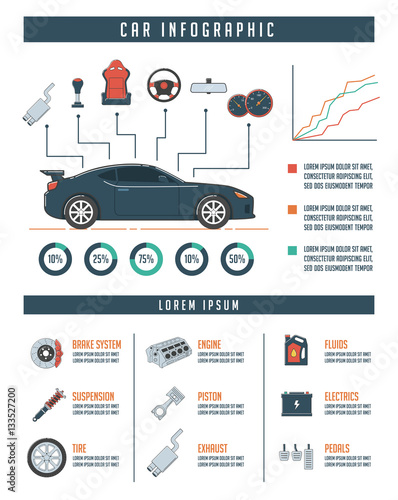Analyzing Your Car'S Warning Indicators: What They Really Communicate
Analyzing Your Car'S Warning Indicators: What They Really Communicate
Blog Article
Content Writer-Termansen Dalgaard
When you lag the wheel, those beautiful caution lights on your dashboard can be a little bit bewildering. Do click this link understand what they're attempting to tell you about your automobile's health and wellness? Comprehending the relevance of these lights is essential for your safety and the long life of your car. So, the next time among those lights pops up, wouldn't you wish to decode its message properly and take the required steps to resolve it?
Common Warning Lighting and Interpretations
Determine usual warning lights in your vehicle and understand their definitions to guarantee secure driving.
One of the most common warning lights include the check engine light, which indicates problems with the engine or discharges system. If this light begins, it's crucial to have your vehicle examined immediately.
The oil stress warning light shows reduced oil stress, calling for immediate interest to prevent engine damages.
A flashing battery light may recommend a damaged charging system, potentially leaving you stranded otherwise attended to.
The tire pressure surveillance system (TPMS) light informs you to low tire stress, impacting lorry security and fuel performance. Neglecting this could bring about unsafe driving problems.
The abdominal light indicates an issue with the anti-lock stopping system, endangering your ability to quit quickly in emergencies.
Finally, the coolant temperature level cautioning light warns of engine getting too hot, which can result in serious damage if not resolved quickly.
Understanding these common warning lights will assist you deal with issues quickly and maintain secure driving conditions.
Relevance of Prompt Focus
Comprehending the usual warning lights in your cars and truck is only the first step; the importance of promptly attending to these warnings can't be highlighted sufficient to guarantee your safety when driving.
When a caution light brightens on your dashboard, it's your cars and truck's way of interacting a potential issue that needs attention. Ignoring these cautions can lead to more serious problems later on, jeopardizing your safety and security and potentially costing you much more out of commission.
Motivate focus to warning lights can avoid breakdowns and crashes. As an example, a flashing check engine light could indicate a misfire that, if left unattended, can create damages to the catalytic converter. Resolving this promptly can save you from a costly repair.
Similarly, a brake system cautioning light may indicate reduced brake fluid or used brake pads, vital parts for your safety and security when driving.
Do It Yourself Troubleshooting Tips
If you discover a caution light on your control panel, there are a few DIY fixing tips you can try prior to looking for specialist assistance.
The first step is to consult your vehicle's handbook to recognize what the particular warning light suggests. Sometimes the concern can be as easy as a loose gas cap triggering the check engine light. Tightening up https://raymondkeysm.is-blog.com/36280260/a-step-by-step-process-for-cleansing-and-protecting-your-vehicle-s-interior may resolve the problem.
Another typical problem is a reduced battery, which can set off various advising lights. Examining the battery connections for deterioration and guaranteeing they're protected may fix the issue.
If a warning light persists, you can try resetting it by disconnecting the vehicle's battery for a few minutes and after that reconnecting it. Furthermore, examining your automobile's liquid levels, such as oil, coolant, and brake fluid, can aid fix alerting lights associated with these systems.
Conclusion
To conclude, comprehending your auto's caution lights is necessary for maintaining your car running efficiently and securely. By immediately addressing these signals and recognizing what they suggest, you can avoid expensive fixings and prospective breakdowns.
Bear in mind to consult your vehicle's manual for particular information on each advising light and do something about it accordingly to guarantee a trouble-free driving experience.
Remain notified, remain secure on the road!
